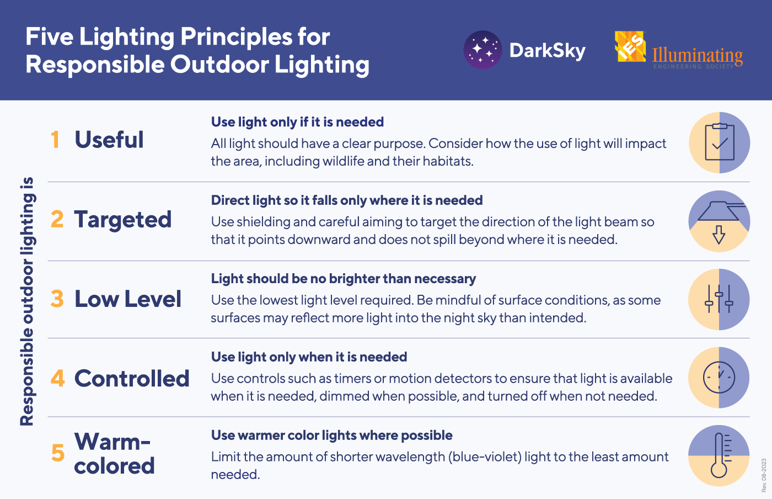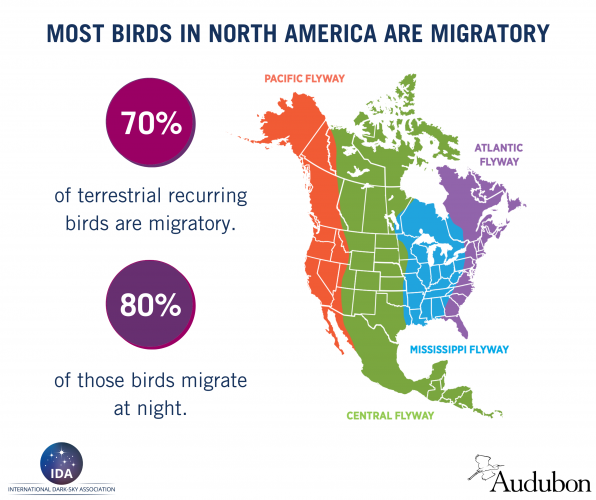"Lights Out" in May and September
Lights Out Heartland encourages the use of responsible outdoor lighting throughout the year but especially in May and September when bird migration is particularly intense.
Turn off outdoor lights if they are not useful. If lights are necessary, refer to the "Five Principles for Responsible Outdoor Lighting" for guidance on how to minimize lighting during bird migration periods.


